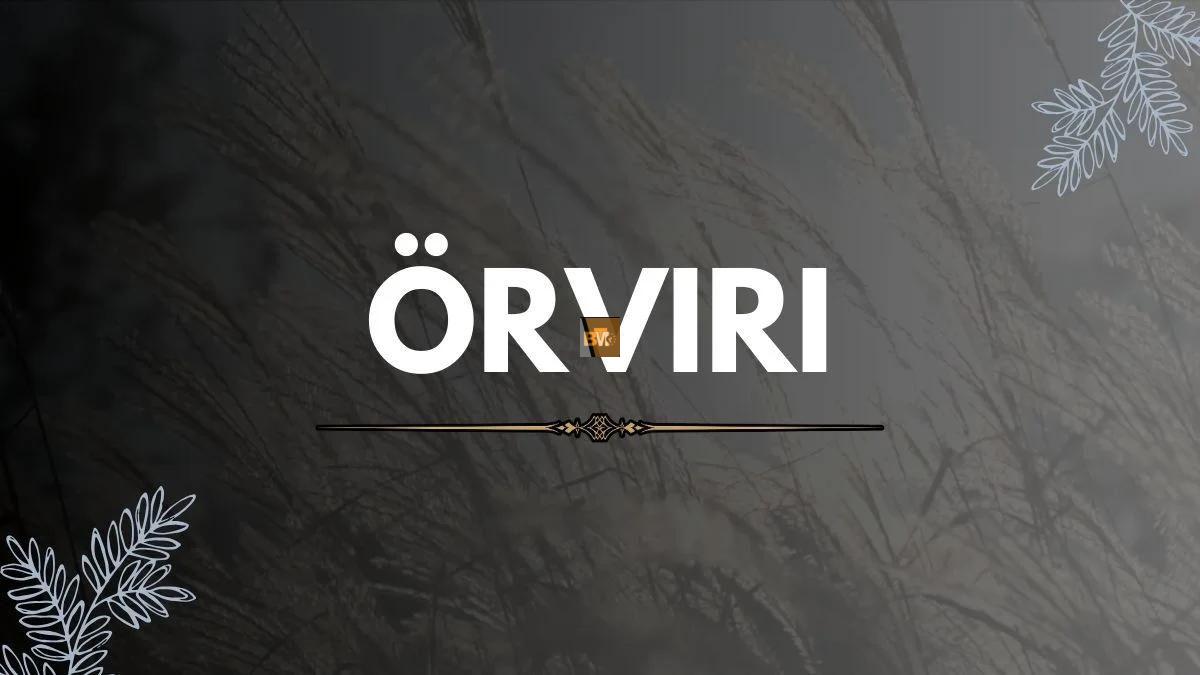Throughout history, countless Örviri cultures have birthed enigmatic legends and mysterious beings that captivate the imagination. Among these elusive entities stands Örviri, a name whispered in hushed tones, woven intricately into ancient folklore and passed down through generations. Shrouded in mystery, Örviri embodies the unknown—an ethereal force that bridges the realms of myth, nature, and the supernatural.
In this article, we’ll delve deep into the origins, interpretations, and cultural significance of Örviri, unraveling the threads that make it such a captivating figure in folklore.
The Origins of Örviri
The precise origin of Örviri is hard to pinpoint, as it is steeped in oral traditions rather than written records. Some folklorists trace its roots to Northern European or Scandinavian myths, though its legend seems to transcend borders, appearing in varying forms across different cultures.
In many tales, Örviri is described as a spirit of the forest or a guardian of hidden knowledge, often associated with the natural world’s secrets. Villagers spoke of Ör-viri as an entity that lurked in the shadows of the woods, watching over nature’s balance, punishing those who disrespected it, and rewarding those who honored it.
Örviri’s Appearance and Characteristics
Descriptions of Örviri vary widely, adding to its mystique:
- Shape-shifting abilities: Some stories portray Örvir as a being that can take on multiple forms—a glowing orb, a shadowy figure, or even an animal such as a fox or owl.
- Eyes of Light: A common motif is Örviri’s glowing eyes, said to pierce through the densest forests or the darkest nights.
- Whispered Voice: Often, the entity communicates in whispers carried by the wind, guiding lost travelers or warning of impending danger.
Despite its sometimes fearsome reputation, Örviri is not solely malevolent. It is viewed as a neutral force of nature, balancing light and darkness, good and evil.
Symbolism and Cultural Significance
Örviri holds a potent symbolic presence in folklore:
1. Protector of Nature
In many legends, Örviri is the embodiment of nature’s delicate equilibrium. It punishes those who exploit or harm the natural world, serving as a guardian spirit.
2. Harbinger of Change
Some cultures interpret encounters with Örvir as omens of significant life transitions—birth, death, or personal transformation. Seeing Örviri was believed to signal the need for introspection or change.
3. Keeper of Hidden Wisdom
Örviri is often linked to ancient knowledge and mystical secrets. Shamans and wise elders would invoke Örviri in rituals seeking enlightenment or guidance.
Örviri in Modern Times
While the belief in such entities may have waned in the age of technology, Örvir continues to inspire artists, writers, and spiritual seekers. It appears in:
- Fantasy literature and folklore-inspired media, symbolizing the mystical unknown.
- Environmental movements, where Örviri is embraced as a symbol of ecological awareness and respect for nature.
- Modern pagan and neo-folk practices, with some communities invoking the entity in rituals celebrating the cycles of nature.
Interpretations and Theories
Some folklorists suggest that Örvir may represent a personification of human fears and hopes regarding the wild and untamed. Others believe it reflects humanity’s deep-rooted connection to nature and our collective unconscious, symbolizing both the beauty and danger of the unknown.
Psychologically, Örviri could be seen as a metaphor for facing inner shadows, learning to balance instinct and intellect, and understanding the mysteries of life itself.
Final Thoughts
Örviri stands as a timeless figure in the pantheon of folklore—mysterious, powerful, and ever-evolving. Whether viewed as a mystical guardian, an omen, or a mirror of our inner world, its legend continues to captivate and intrigue.
As long as humans feel drawn to the mysteries of the unknown, the whisper of Örvir’s presence will endure, echoing through forests, across generations, and within our collective imagination.
Frequently Asked Questions (FAQs)
Q1: What is Örviri?
A1: Örviri is a mystical entity rooted in folklore, often described as a guardian of nature, a shape-shifter, or a keeper of ancient wisdom.
Q2: Where does the legend of Örviri originate?
A2: Though its precise origins are unclear, Örvir is commonly associated with Northern European or Scandinavian folklore, but similar versions of the entity appear in multiple cultures.
Q3: Is Örviri considered good or evil?
A3: Örviri is generally seen as a neutral force of nature—neither strictly good nor evil—but rather a balancing force that rewards respect for nature and punishes harm.
Q4: How is Örviri represented in modern times?
A4: Örvir appears in modern literature, art, and environmental movements, often symbolizing mystery, respect for nature, and hidden wisdom.
Q5: Can Örviri be connected to real-world beliefs or practices?
A5: Yes, Örvir resonates with modern pagan rituals, environmental awareness campaigns, and psychological interpretations related to personal growth and facing the unknown.

